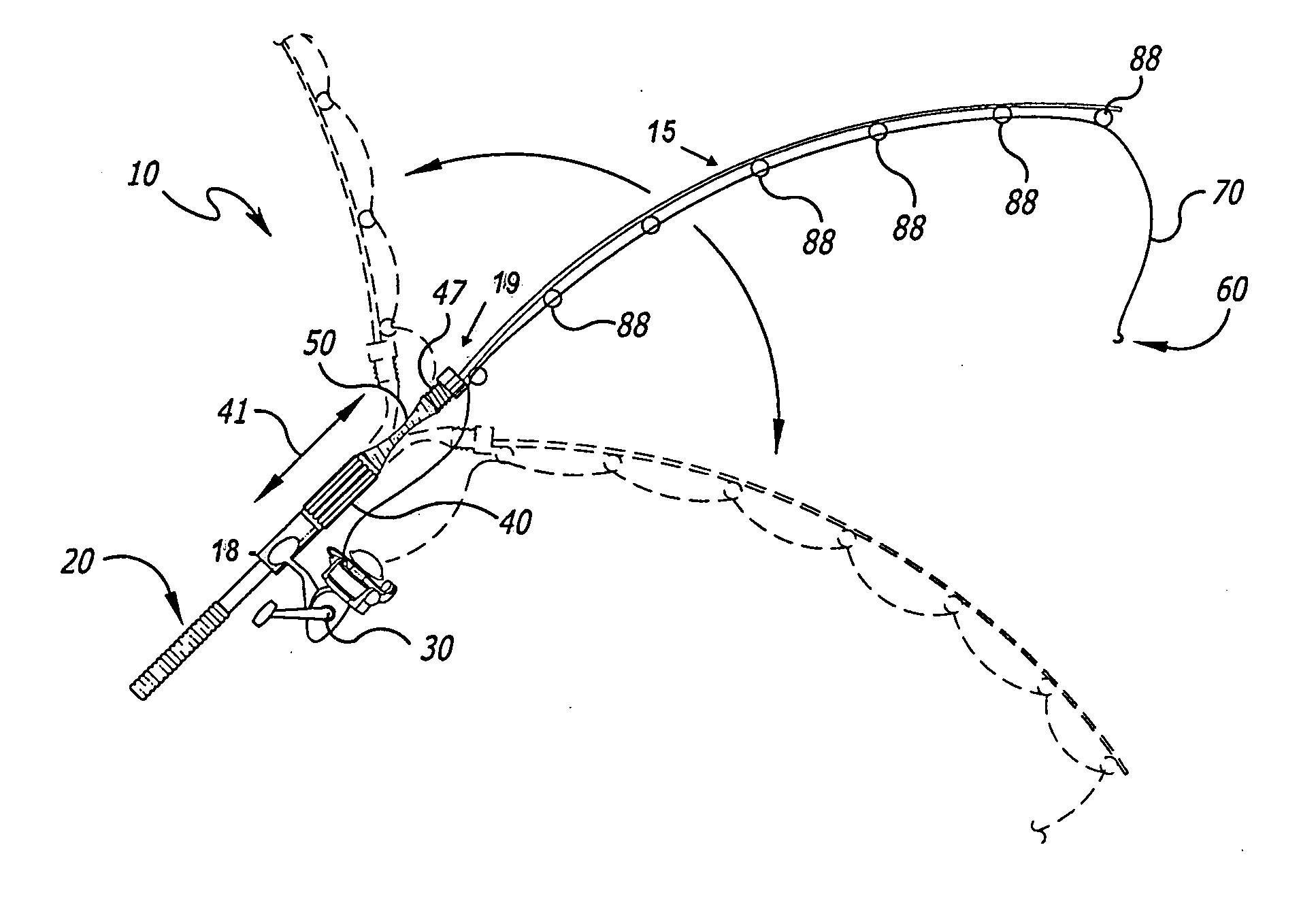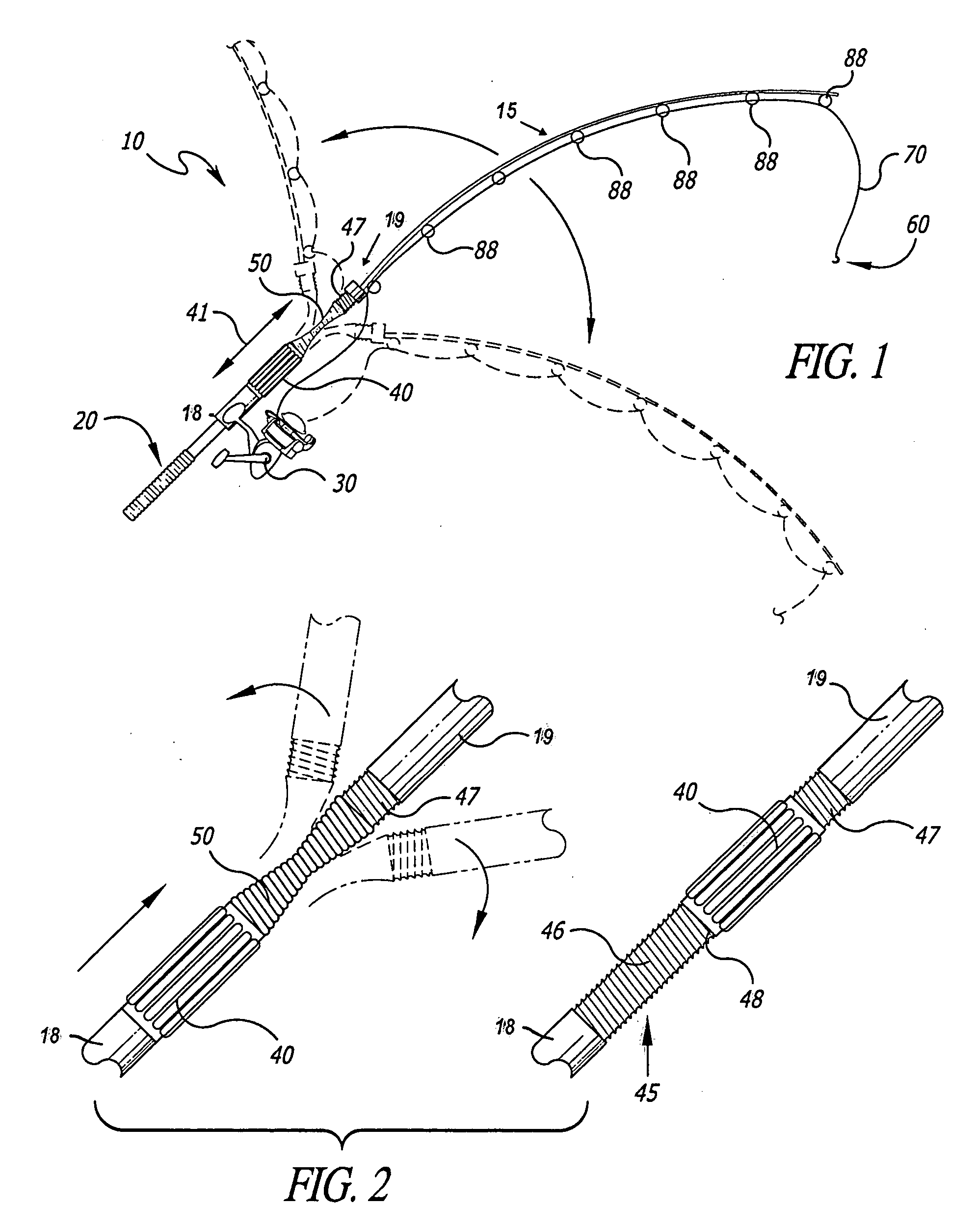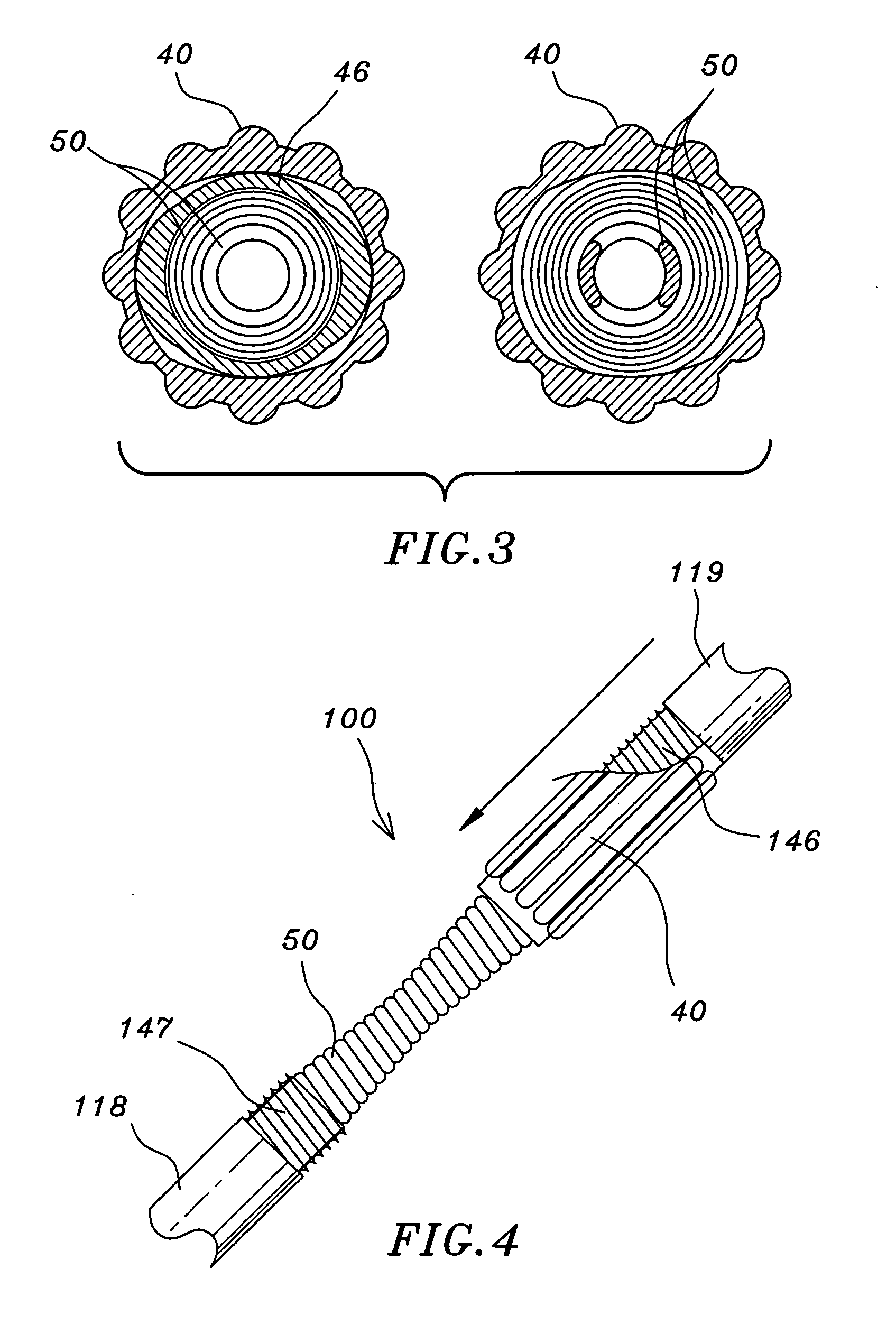Flexible segment fishing pole
a flexible segment and fishing rod technology, applied in the field of fishing poles, can solve the problems of unification, increased fishing rod flexibility, and long time in water, and achieve the effects of reducing fishing rod flexibility, increasing rod flexibility, and increasing fishing rod flexibility
- Summary
- Abstract
- Description
- Claims
- Application Information
AI Technical Summary
Benefits of technology
Problems solved by technology
Method used
Image
Examples
third embodiment
[0040] In the slotted model according to the invention illustrated in FIG. 5, a fishing rod 200 comprises a lower rod portion 218 terminating with an elongated boss 228, which has a tip portion coaxially press fitted into the flexible segment 50. A cylindrical sleeve 240 is mounted slidably over the segment 50 as well as boss 228. The opposite end of the flexible segment 50 is fitted with an upper rod portion 219 also firmly attached in line with the lower rod portion 218. The sleeve 240 has two serial slots 242 and 244 that open to the opposite ends to engage pins or protrusions 246 and 247 mounted on the lower and upper rod portions 218 and 219, respectively. The upper slot 244 is shorter than the lower slot 242, which extends to the middle of the sleeve 240. In order to give the sleeve 240 positive shifts between engagement and disengaged positions and a midway position, the longer slot 242 has two short circumferential notches, one at 245 near the lower end of sleeve 240 and the...
fourth embodiment
[0044]FIG. 6 illustrates the present invention wherein a fishing rod 300 comprises a lower rod portion 318 made of a hollow blank rod to which a handle is attached at its lower end. The top end of the lower portion 318 is provided with a boss 346 of reduced diameter for insertion into an open end of the flexible segment 50. In order to form a positive abutment against the spring 50, the boss 346 of lower portion 318 may be threaded externally conforming to the helical extensions of the coil spring. An upper rod portion 319 is similarly provided with a lower boss 347 inserted threadedly into the other end of the spring 50 thereby providing two prominent flexing points as at 351 and 352 along the spring 50. Also, as an alternative method to reinforce the flexible segment 50, a rigid rod or latch 340 that slides between an engagement position that rigidly connects the upper rod portion 319 with the lower rod portion 318, and a disengaged position where the latch 340 is cleared from a r...
PUM
 Login to View More
Login to View More Abstract
Description
Claims
Application Information
 Login to View More
Login to View More - R&D
- Intellectual Property
- Life Sciences
- Materials
- Tech Scout
- Unparalleled Data Quality
- Higher Quality Content
- 60% Fewer Hallucinations
Browse by: Latest US Patents, China's latest patents, Technical Efficacy Thesaurus, Application Domain, Technology Topic, Popular Technical Reports.
© 2025 PatSnap. All rights reserved.Legal|Privacy policy|Modern Slavery Act Transparency Statement|Sitemap|About US| Contact US: help@patsnap.com



